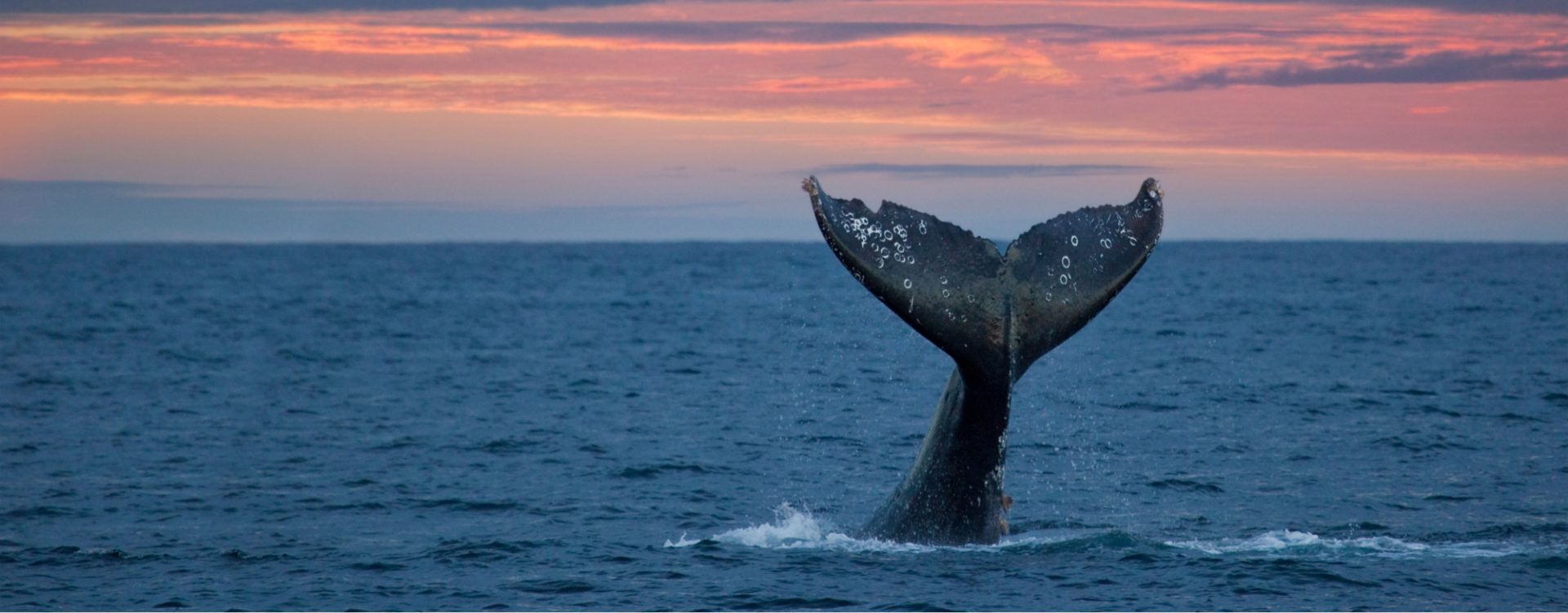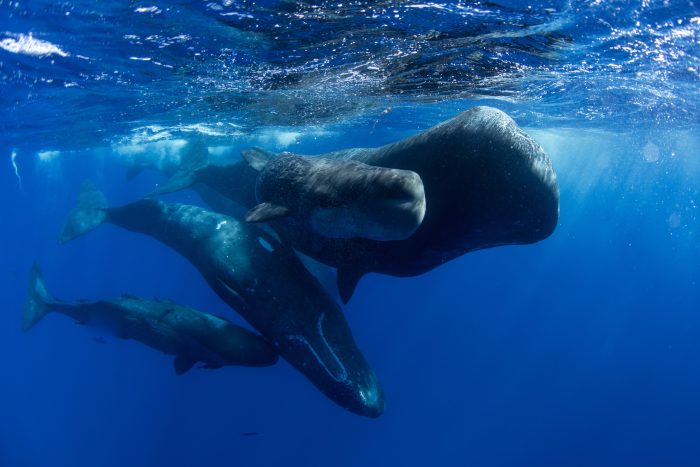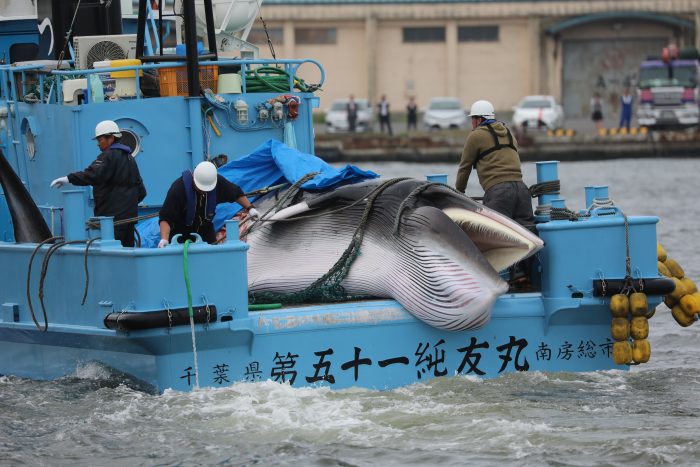Is the International Whaling Commission (IWC) a ‘zombie’ organisation that should be disbanded?



As we approach the 40th anniversary of the moratorium on commercial whaling, the International Whaling Commission (IWC) is more relevant than ever to the conservation of the world’s whales, dolphins and porpoises.
A recent article in Nature claims the International Whaling Commission has outlived its usefulness and should be dismantled. Absolutely not, argues EIA’s senior campaigner, Clare Perry, who has fought for decades to maintain and strengthen the moratorium on commercial whaling and broaden action within the IWC.
On 15th August, four authors led by Peter Bridgewater, a previous chair of the International Whaling Commission (IWC) published a comment in Nature entitled “Dismantle ‘zombie’ wildlife protection conventions once their work is done”. In it the authors argue that the IWC has outlived its usefulness and should be retired, devolving its responsibilities for managing commercial and subsistence whaling to national governments, while the Convention on Migratory Species could act as a ‘global whale observatory’ alerting the world to negative trends in any species.
Although they acknowledge the “huge achievement” of the moratorium on commercial whaling, the authors lament that since that time, the IWC has “done little to help conserve the great whales” and failed to “encourage the sustainable harvesting” of whale populations.
It’s hard to understand the motivation of the authors, but the argument to abandon a successful treaty is dangerously flawed – particularly given that more than a quarter of the 92 cetacean (whale, dolphin and porpoise) species are threatened with extinction (i.e., critically endangered, endangered, or vulnerable) and 11% are near threatened.

Sperm whale mother and calf
Among many erroneous statements, the authors suggest that the IWC has had no impact on addressing current whaling. While the IWC cannot prevent Japan, Norway and Iceland from whaling despite the moratorium, it does at least provide a level of international oversight, monitoring and reporting which is essential to prevent an escalation of catch numbers and illegal whaling. And of course, the continued existence of the moratorium prevents new countries from starting up a commercial whaling hunt.
Bridgewater and his colleagues also claim that the International Court of Justice (ICJ) case brought by Australia on Japan’s scientific whaling “had no discernible impact on whale conservation”. The reality is that the ICJ ruling forced Japan to stop whaling in the Antarctic, leaving multiple whale populations with one less threat to deal with in that critical habitat, which is already threatened by climate change and over-fishing of krill, their main food source. It also helped to persuade leading online retailer, Rakuten, to stop selling whale products altogether – further reducing the demand and availability of whale products in Japan.
The Nature comment also fails to acknowledge a multitude of consensus agreements and actions by the IWC that have contributed to reducing threats to cetaceans. For example, consensus resolutions adopted by the IWC on critically endangered species, such as the vaquita and river dolphins, have lent support to national efforts to save them. Soon after the moratorium was implemented, for example, Japan responded to a 1990 IWC Resolution requesting it to reduce the scale of the Dall’s porpoise hunt, resulting in a reduction in the catch from a high of 40,000 in 1988 to an average catch of under 15,000 over the next decade.
The Nature comment asserts that “Today, the biggest threats to whales are ship strikes, pollution and climate change”. In fact, bycatch is widely recognised as the single most serious direct threat to cetaceans, but regardless, the authors appear to be unaware that the IWC is in fact tackling all of these threats and more:

Sperm whale eating a plastic bag in the ocean
Other initiatives and work programmes cover whale strandings, whale watching, ocean noise, marine debris, ecosystem services and plastic pollution. The IWC is operating five Conservation Management Plans – for Pacific Gray Whales, Atlantic Southern Right Whales, Eastern Pacific Southern Right Whales, Franciscana dolphins and Amazon River Dolphins – and four new proposed CMPs will be discussed at IWC69.
All of this occurs on top of a major workload undertaken by the Scientific Committee to assess the status of whale populations worldwide and offer scientific advice on subsistence whaling quotas. The IWC’s Scientific Committee, a body of cetacean experts second to none, has 76 active Intersessional Correspondence Groups while the Conservation Committee has more than 15. Joji Morishita, previous Commissioner to the IWC for Japan and a long-term attendee at the IWC recently praised the Scientific Committee, describing its work as: “…one of the most reliable scientific assessments you can get through an international system”.
Considering all these activities, it is surprising to see Bridgewater et al. state that the IWC has “so little to show from the past four decades”. In particular, considering that at least one of the authors – Dr Nikolas Sellheim – does actually attend the IWC. Indeed, he is currently on contract to the IWC to undertake a survey of Indigenous and Human Rights Instruments!
Moreover, the issues described above have broad consensus support across all IWC member governments, contrary to the article’s claim of “acrimonious and fruitless dialogue”. As expressed by Amadou Telivel Diallo, the current IWC Chair from the Republic of Guinea (a country that typically votes in support of commercial whaling): “Speaking as IWC Chair from an African nation, I am delighted to see entanglement response advanced apprenticeships completed in Kenya and an IWC lecture series on the Science-Policy-Practice Interface delivered to MSc students from 23 African countries.”
At the same time, the threat of commercial whaling is still very much alive. Recent worrying developments include the building of a new factory ship in Japan that could hunt in the Antarctic and a new quota to hunt vulnerable North Pacific fin whales, as well as a new fin whale quota for Iceland’s whalers (despite evidence that the hunt contravenes Iceland’s own animal welfare laws). At the forthcoming IWC69 meeting in Peru, Antigua & Barbuda (a long-standing staunch pro-whaling advocate at the IWC) is proposing a “Resolution for the Implementation of a conservation and management program for whale stocks aimed towards the lifting of the moratorium and orderly development of the whaling industry.”

Japan’s first commercial hunt after leaving the IWC in 2019 ©EIA
All of this demonstrates that the IWC is far from a ‘zombie’ treaty and remains highly relevant and worth investing in. The idea of dismantling the IWC and allowing governments to manage their own commercial whaling is shockingly dangerous, given the sustained over-exploitation and large-scale illegal whaling that occurred prior to the moratorium. Notably, the failed attempts alluded to by the authors to “reform the convention and achieve further useful outcomes” (i.e. commercial whaling) failed precisely because the whaling countries were unwilling to accept a transparent IWC-approved observation and inspection scheme that would provide supervision in accordance with best international practices. The IWC continues to play a vital role, with a strong focus on science-led conservation efforts and international cooperation. Disbanding the IWC would be dangerous, risking a return to unregulated whaling and jeopardising decades of progress in cetacean conservation.
Finally, while the IWC is the focus of the article the authors also take a shot at the Montreal Protocol, demonstrating an extraordinary lack of knowledge and understanding. They suggest that the Montreal Protocol has “done its work”, seemingly ignorant that the phase-out of ozone depleting substances is not complete, that nitrous oxide emissions are currently the largest threat to the ozone layer (and also incidentally the third largest greenhouse gas) and that the Protocol has only just started a global phase-down of hydrofluorocarbons (HFCs), which will not be complete until 2047.
The HFC phase-down has the potential to avoid half a degree of warming or more by the end of the century, on top of an estimated 2.5°C warming already avoided through the Montreal Protocol’s actions. The Protocol has even more to offer in terms of global climate mitigation and a great deal of unfinished business. The notion of taking that job away from the Montreal Protocol, which is widely known as the most successful environmental treaty, and giving it to the UNFCCC, which has neither the expertise in the chemicals of concern and is also patently failing in its own goal of limiting global warming to 1.5 degrees, is absolutely ludicrous.
For further information on the IWC’s role, EIA joined more than 30 NGOs that regularly attend the IWC in a joint statement on its vital role, available in English and in Spanish.